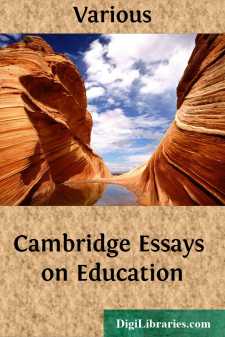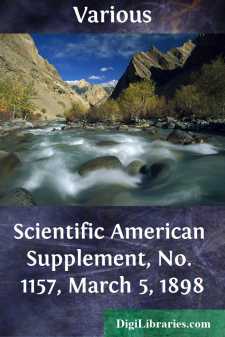Categories
- Antiques & Collectibles 13
- Architecture 36
- Art 48
- Bibles 22
- Biography & Autobiography 813
- Body, Mind & Spirit 142
- Business & Economics 28
- Children's Books 15
- Children's Fiction 12
- Computers 4
- Cooking 94
- Crafts & Hobbies 4
- Drama 346
- Education 46
- Family & Relationships 57
- Fiction 11828
- Games 19
- Gardening 17
- Health & Fitness 34
- History 1377
- House & Home 1
- Humor 147
- Juvenile Fiction 1873
- Juvenile Nonfiction 202
- Language Arts & Disciplines 88
- Law 16
- Literary Collections 686
- Literary Criticism 179
- Mathematics 13
- Medical 41
- Music 40
- Nature 179
- Non-Classifiable 1768
- Performing Arts 7
- Periodicals 1453
- Philosophy 64
- Photography 2
- Poetry 896
- Political Science 203
- Psychology 42
- Reference 154
- Religion 513
- Science 126
- Self-Help 84
- Social Science 81
- Sports & Recreation 34
- Study Aids 3
- Technology & Engineering 59
- Transportation 23
- Travel 463
- True Crime 29
The Atlantic Monthly, Volume 05, No. 30, April, 1860
by: Various
Categories:
Description:
Excerpt
THE LAWS OF BEAUTY.
The fatal mistake of many inquirers concerning the line of beauty has been, that they have sought in that which is outward for that which is within. Beauty, perceived only by the mind, and, so far as we have any direct proof, perceived by man alone of all the animals, must be an expression of intelligence, the work of mind. It cannot spring from anything purely accidental; it does not arise from material, but from spiritual forces. That the outline of a figure, and its surface, are capable of expressing the emotions of the mind is manifest from the art of the sculptor, which represents in cold, colorless marble the varied expressions of living faces,—or from the art of the engraver, who, by simple outlines, can soothe you with a swelling lowland landscape, or brace you with the cool air of the mountains.
Now the highest beauty is doubtless that which expresses the noblest emotion. A face that shines, like that of Moses, from communion with the Highest, is more truly beautiful than the most faultless features without moral expression. But there is a beauty which does not reveal emotion, but only thought,—a beauty which consists simply in the form, and which is admired for its form alone.
Let us, for the present, confine our attention to this most limited species of beauty,—the beauty of configuration only.
This beauty of mere outline has, by some celebrated writers, been resolved into some certain curved line, or line of beauty; by others into numerical proportion of dimensions; and again by others into early pleasing associations with curvilinear forms. But, if we look at the subject in an intellectual light, we shall find a better explanation. Forms are the embodiment of thought or law. For the common eye they must be embodied in material shape; while to the geometer and the artist, they may be so distinctly shadowed forth in conception as to need no material figure to render their beauty appreciable. Now this embodiment, or this conception, in all cases, demands some law in the mind, by which it is conceived or made; and we must look at the nature of this law, in order to approach more nearly to understanding the nature of beauty.
We are thus led, through our search for beauty, into the temple of Geometry, the most ancient and venerable of sciences. From her oracles alone can we learn the generation of beauty, so far as it consists in form alone.
Maupertuis' law of the least action is not simply a mechanical, but it is a universal axiom. The Divine Being does all things with the least possible expenditure of force; and all hearts and all minds honor men in proportion as they approach to this divine economy. As gracefulness in motion consists in moving with the least waste of muscular power, so elegance in intellectual and literary exertions arises from the ease with which their achievements are accomplished. We seek in all things simplicity and unity. In Nature we have faith that there is such unity, even in the midst of the wildest diversity....












